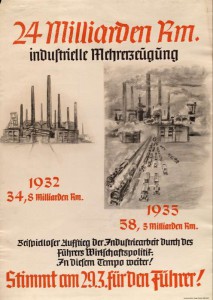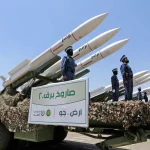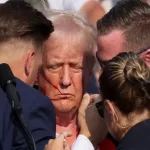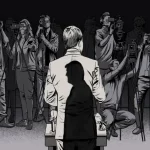So Adolf Hitler managed to resolve the first problem. However, even after becoming chancellor in January 1933, he still found himself unable to unleash a military conflict for the most prosaic of reasons – he literally had no army. With his 100,000-strong Reichswehr (lacking tanks, aircraft, heavy artillery, and a fleet) the Fuhrer had the ability to accost no one but his tiny neighbor Luxembourg, and then presumably only with the acquiescence of the other powers. In order to launch World War II, Hitler needed to resurrect his army, furnish it with the latest weapons, and expand it to 42 times its current size!
Anyone can see that serious money is needed to maintain an army. And even more money is needed to rearm one. And truly astronomical sums are required to expand it to 42 times its size. This task is extremely complex even in an economically developed country. And what if a country is on the verge of collapse, with six million unemployed and factories shutting their doors because a global economic crisis is causing capital to hemorrhage across its borders? That’s an impossible project. The economy could never sustain such wild growth in military spending, and living standards would inevitably fall. That would be followed by either revolution or a rejection of such a militaristic course of action.
But we all know Hitler managed it. How?
Someone was providing him with huge financial assistance!
It is fair to say that Germany’s economic recovery began in 1924, when it became clear that fighting any potential future war with Russia would require not only leaders,[1] but also an aggressor nation. Poland could not hope to defeat Russia on its own. The French and British had no desire to fight. The events of 1914 could be reenacted, but now Germany was weaker than ever before. She had to be rebuilt. On August 16, 1924, the representatives of the victorious powers adopted what was known as the Dawes Plan at a conference in London: American capital would provide a lifeline of loans to the sickly German nation, after which she would continue to pay reparations. And key German industries could be picked up on the cheap by American monopolies. This plan achieved three goals:
• the preparation of a future aggressor
• profits from the influx of capital
• the dependence of the German economy on foreign investors, thus making German policies easier to manipulate
The Germans received a sizable chunk of cash – $190 million.[2]The result was that in August 1924, the German currency immediately stabilized, and suddenly that awful era in which it took billions and trillions of German marks to buy a single dollar simply vanished. But the other elements of this plan were not so humane. Under the specious pretext of ensuring reparation payments, the Allies were handed control of the German state budget, money supply and credit, and railroads. It was during this period that “Putzi”Hanfstaengl appears at Hitler’s side, and Captain Truman Smith, the U.S.military attaché, is sent to Germany to peruse the selection of available German politicians …
Germany was, in fact, under a quiet American occupation. Germany’s independence at that time was as illusory as, for example, that of Iraq today. A government, flag, and national anthem all existed, but not the capability to devise independent solutions. England and the US could do as they pleased in Germany, and we can see the result: unending elections, Hitler’s early release from custody, and then his appointment as chancellor. Nothing that happened in Germany between 1918 and 1933 occurred at the bidding of the Germans themselves.

In 1932 Germany was actually released from its obligation to continue paying reparations, although only an insignificant fraction had been repaid. Why was this? Because in January 1933, Adolf Hitler became chancellor and he needed to create an economic miracle. And for that he needed money.
German arms spending between 1933 and 1939 increased almost tenfold (from 1.9 billion marks to 18.41 billion marks), and its growth as a percentage of the national budget was no less impressive – from 24 to 58%. For the sake of comparison, the world’s greatest “threat,”the communist Soviet Union, which was supposedly preparing for world conquest, was allocating only 9% of its budget to its military in 1934.
As we know, Adolf Hitler managed his task admirably. In an unbelievably short period of time – just six years in office – he was able to rebuild a war machine of unbelievable power. Historians call this the Nazi economic miracle. However, behind every phenomenal success of one party, we find a betrayal of the interests of the party on the other side of the political divide. And the more unbelievably “miraculous” the success of one country, the more the leaders of the other powers agree to play along. And so Hitler’s unbelievable successes on the world stage were predicated not on his outstanding talents as a diplomat or statesman, rather, they had been previously arranged with England, the US, and France in a betrayal of the interests of the German nation.
It is clear that the Nazis’ successes were funded and organized by the “civilized world” of that era. The prompt onset of a military conflict was more advantageous to London and Washington in purely economic terms (not even politically!). The sooner it began, the less money would need to be poured into the bottomless pit of Hitler’s war machine. So, for them, an onset of war in 1938 would be preferable to 1939, and 1939 better than 1940.
If the leaders of the Western world had wanted to prevent a future war, it would have been possible to do so with little or no loss of blood, or at least without anything like the amount of bloodshed that was to come. Churchill later acknowledged this himself, claiming that “up till 1934 at least German rearmament could have been prevented without the loss of a single life.”[3] So why was it allowed to continue? Churchill does not answer this question in his memoirs. But one thing is clear to any rational person: if serious-minded politicians see a danger and deliberately make no move to eliminate it, the situation must be to their liking.
Winston Churchill was a British patriot and one of that nation’s most renowned leaders. Thus he was unable to say plainly why events had taken such a strange turn. But one sentence should give any reader pause: “Up till the middle of 1936 Hitler’s aggressive policy and treaty-breaking had rested, not upon Germany’s strength, but upon the disunion and timidity of France and Britain and the isolation of the United States.”[4]
Well, there you go, a bulletproof alibi: “disunion,”“timidity,” and “isolation.”We can clearly see the full extent of American “isolation” in the number of US spies like Ernst Hanfstaengl who were dancing around Hitler. And the facts:
 • On September 19, 1934 the most modern equipment for aircraft factories was secretly delivered to Germany from the US against $1 million in gold, and it would soon be put to work manufacturing German airplanes.[5]
• On September 19, 1934 the most modern equipment for aircraft factories was secretly delivered to Germany from the US against $1 million in gold, and it would soon be put to work manufacturing German airplanes.[5]
• At the same time, Germany was obtaining a large number of military patents[6] from the US firms Pratt & Whitney, Douglas, and Bendix Aviation, while Junkers Ju 87 bombers were built with techniques learned in Detroit.[7]
One can see the same motives behind Churchill’s mention of the “disunion” and “timidity” of Paris and London. Within the confines of this work we cannot devote much space to technical details. Therefore we will only mention briefly that by 1936, when he was already “arousing fear,” Hitler lacked not only modern aircraft, but even tanks. The first truly worthwhile tank of Hitler’s Reich was the Panzer III, production of which did not begin until 1938. An updated version of its predecessor, the Panzer II F, with additional armor in the front (only when so fortified could this fearsome piece of machinery avoid falling easy prey to the enemy) went into production in June 1940. Therefore Winston Churchill claims in his memoirs,“The vast tank production with which they broke the French front did not come into existence till 1940.”[8]
The revival and rearming of the German Army between 1933 and 1939 occurred with the knowledge and strong financial and technological support of the oligarchic circles of Great Britain and the United States. The goal of this policy was to create a colossal war machine in the guise of Nazi Germany in order to deal a blow to Soviet Russia. But before that, Germany still had to regain the Teutonic lands that had been lost as a result of being vanquished in the First World War. In the next chapter we will see what kind of assistance Hitler received in these matters from his overseas “friends.”
_____________________________
END NOTES
[1] This was taken care of on an individual basis, releasing Hitler from prison before he had served even a quarter of his term.
[2]Preparata, Guido Giacomo. Conjuring Hitler.How Britain and the USA Created the Third Reich. Pg.164.
[3]Churchill, Winston. The Second World War.Vol. 1.The Gathering Storm. Pg.46.
[4]Churchill, Winston. The Second World War.Vol.1.The Gathering Storm.Pg.190.
[5]Preparata, Guido Giacomo. Conjuring Hitler.How Britain and the USA Created the Third Reich.Pg. 225.
[6]Ibid.Pg.226.
[7] Ibid.
[8]Churchill, Winston. The Second World War.Vol.1. The Gathering Storm. Pg.304.
ORIENTAL REVIEW publishes exclusive translations of the chapters from Nikolay Starikov’s documentary research ““Who Made Hitler Attack Stalin” (St.Petersburg, 2008). The original text was subject to minor cuts by the OR editorial.
PREVIOUS EPISODES
Episode 11. A Soviet Quarter Century (1930-1955)
Episode 10. Who Organised the Famine in the USSR in 1932-1933?
Episode 9. How the British “Liberated” Greece
Episode 7. Britain and France Planned to Assault Soviet Union in 1940
Episode 6. Leon Trotsky, Father of German Nazism
Episode 5. Who paid for World War II?
Episode 4. Who ignited First World War?
Episode 3. Assassination in Sarajevo














Pingback: Resowing dragon’s teeth in Europe 75 years later | Oriental Review
Pingback: Episode 12. Why did Britain and the United States have no desire to prevent WWII? (II) – OrientalReview.org